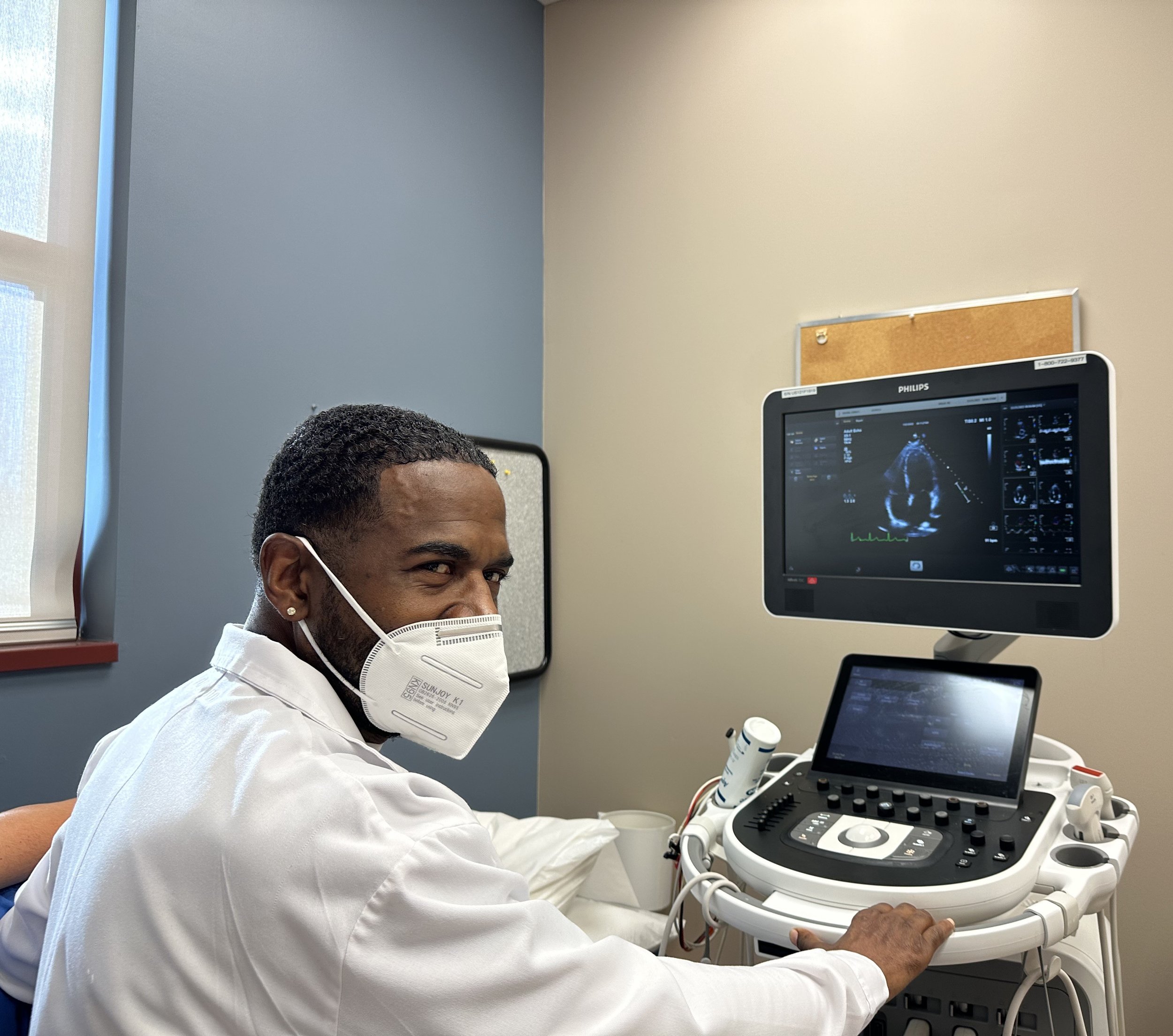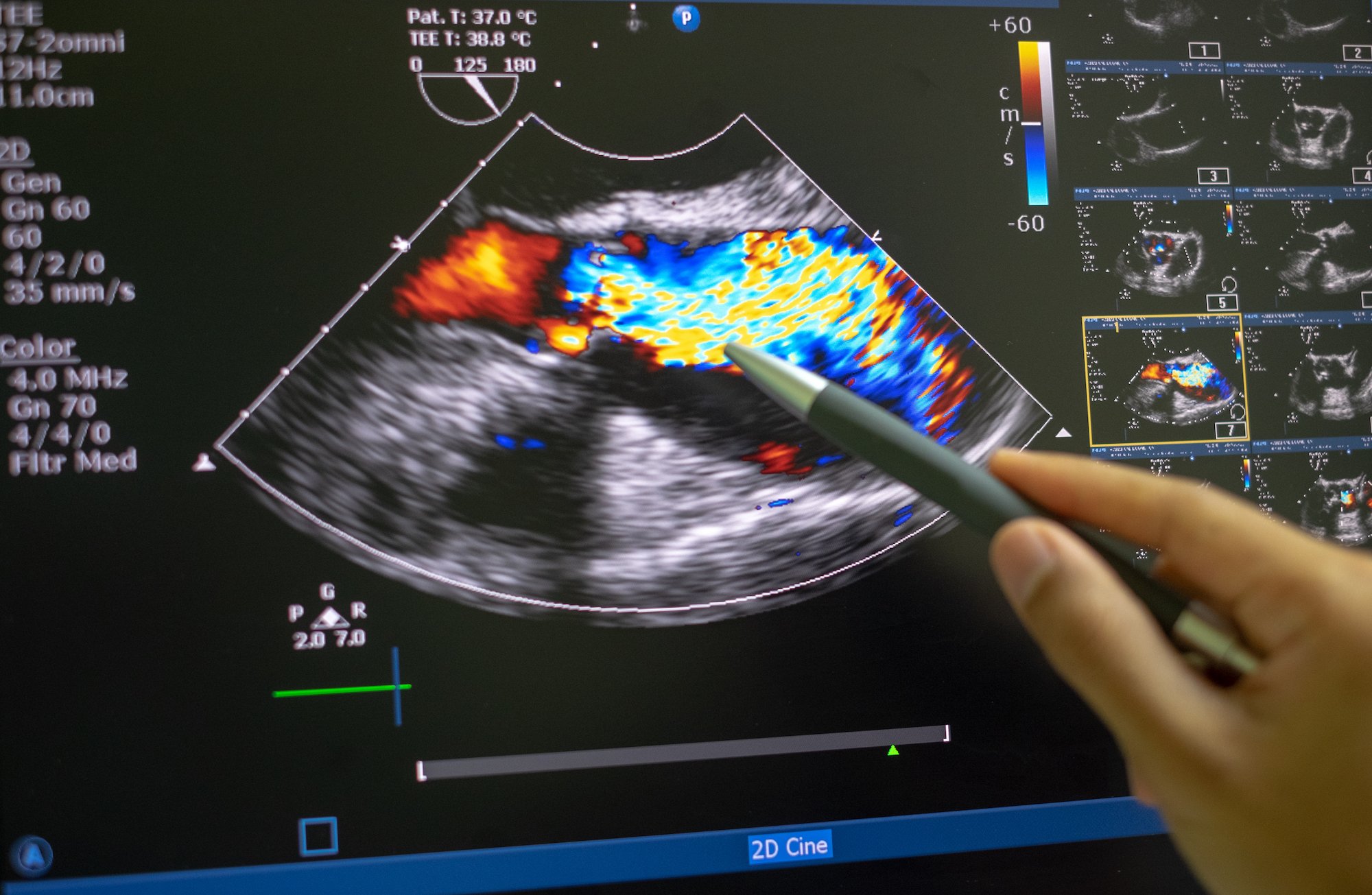
Echocardiography
What it is
An echocardiogram uses sound waves to obtain images of the heart. After applying a gel to the skin, a transducer, which looks somewhat like a microphone, is placed on the chest and sound waves are emitted from it. It is possible to visualize the heart muscle and heart valves and to assess the flow of blood through the heart. Weakness in the heart muscle and problems with the valves opening and closing, among other medical conditions, can be evaluated with this non-invasive technology. The test generally takes about 20 minutes.
Sometimes additional steps are taken during the test to gather more information. A bubble study is a way to look for small connections between two chambers. For the study, a small syringe containing a salt solution is shaken vigorously to create tiny bubbles and then injected through a vein which carries the solution to the heart. A different study, performed to obtain clearer pictures in some patients, is a contrast study. In this test, a benign agent is injected through a vein and passes through the heart. The contrast agent makes it possible to obtain higher quality pictures.
Other Options
Another type of echocardiogram is the transesophageal echo, performed in the hospital with mild sedation. Unlike the echocardiogram described above, a transesophageal echocardiogram obtains images of the heart and nearby structures from within the body rather than from the outside. For this test, the imaging transducer is attached to a thin and flexible tube and passed through the swallowing pipe (esophagus). The swallowing pipe passes near the heart, so very detailed images can be obtained. The test is particularly helpful to look for blood clots in the heart chambers, to look for evidence of infection of the heart valves, and in other cases where more precise images are needed. The test generally takes about 15 minutes.
Services we offer
-

Stress Testing
Exercise and chemical stress testing to assess for blockages and assessment of heart strength by gated blood pool scanning.
-

Sleep Apnea and Sleep Studies
Diagnosis and treatment of obstructive sleep apnea and related diseases.
-

Catheterization and Stenting
Diagnosis and treatment of coronary artery disease including cardiac catheterization and stent placement.
-

Arrhythmias and their treatments
Diagnosis and treatment of arrhythmias including pacemaker and defibrillator placement and ablation procedures.
-

Echocardiography
Cardiac ultrasound to visualize the heart using additional advanced techniques such as bubble or definity contrast as needed. Transesophageal ultrasound performed in the hospital as an outpatient procedure.
-

Vascular Ultrasound
Evaluation of the carotid arteries and blood vessels of the abdomen, kidneys and legs.

